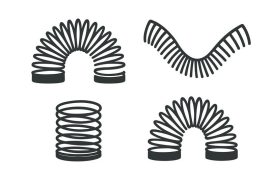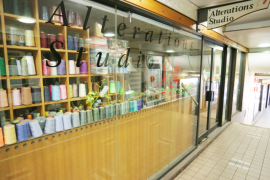First year teaching often requires a delicate and deft hand – teachers balance the delivery of important foundational content with facilitating student transition to university, familiarising them with a new world and supporting them to thrive both academically and professionally. The connection between belonging and learning has been found to be of pivotal importance when looking at how best to support students to achieve positive educational outcomes. Fostering this sense of belonging can be challenging when aspects of the learning environment are not under our control, as the teaching team of BIOL1X07 ‘From Molecules to Ecosystems’ found this year.
The teaching environment in BIOL1X07 is consistent from semester to semester, though with known barriers. We aimed to creatively engage with these physical and conceptual barriers to support the multilayered needs of the cohort. It is a large and diverse unit of study with over 1500 students, and a relatively high number of equity students (at 30%). Students join the class from different stages in their biology learning journey, impacting their confidence with the material and with sharing their knowledge in classes. The physical learning spaces where practical classes are held also create a literal barrier to student communication, which can heighten a sense of alienation and isolation for less-confident student. These variables all come together to form a unique situation for the teaching team to work with; how to create a welcoming environment where students can develop a sense of belonging, confidence in working with peers (an essential learning outcome for a career in the field), and mastery of the subject matter.
To explore how the design team this year worked towards creating a more welcoming learning environment, we will discuss some of the changes made in BIOL1X07, and they have impacted the student cohort. Taking this forward into the broader context of all learning spaces and subjects we’ll also think about how we can take the lessons learned from BIOL1X07 into other learning spaces.
BIOL1X07: a case study
To achieve these goals our team designed and embedded a number of activities in the laboratory teaching space early in the semester. We wanted to to create a meaningful dialogue between the teaching team and students by modelling diversity, allow student voices to be heard and to share their stories, and to demonstrate the ways that the learning space could facilitate communication and collaboration. Drawing on pedagogical literature on Universal Design for Learning, Designing for Diversity and transition pedagogy, we embedded two activities in the first class of the semester; ‘My Journey to Sydney’ and a safety induction scavenger hunt. Welcoming students and validating their experiences by sharing from the teacher perspective can mutually foster empathy, and cultivating a space for peer to peer collaboration can grow confidence in navigating learning spaces and dynamics.
My Journey to Sydney
This activity is an icebreaker designed to help students get to know each other, creating a sense of belonging by sharing experiences that led them to where they are today. Teachers first share their journeys to Sydney to bridge the divide between students and teachers and create space for peer-to-peer bonding. Students then take time to think and share their journeys with each other. This activity was modified in BIOL1X07 to incorporate the challenges presented by the space and encourage students to adapt their environment to their needs by moving equipment, in particular the large monitors present on benches. Find out more in the video below:
Safety induction scavenger hunt
To continue to create more opportunities for peer-to-peer interactions and learning space engagement we designed an activity based on the pre-existing laboratory safety induction. This induction had previously satisfied all necessary compliance requirements, but students struggled to engage meaningfully beyond this. Now, the learning activity provides students with the opportunity to interact with their peers, foster new connections, share knowledge, and help to build a collaborative learning environment. Here’s how we ran this activity:
Feedback from students
Together these two activities worked towards finding new ways to engage students with content, with each other, and to break down barriers between teachers and students, all with the goal of creating an environment where all could feel they were welcomed and belonged. In feedback given in a survey students told us that this has made a difference to their learning experience:
Our demonstrator has been employing a “monitors down” approach when we are in the lab, allowing us to see, and more clearly communicate with our peers. It also helps to promote a more open and connected learning environment.
Students also felt welcomed into the class, more connected with staff and peers, and overall a sense of belonging in the classroom space. In feedback, comments like “I felt as though I could ask any questions I wanted to without judgement” and “I have managed to connect to like-minded students in a way that complements my learning”, show the lasting impact of these activities throughout the semester.
How can I meet challenges in my learning environment?
When discussing learning spaces it is important to recognise that learning environments are diverse and different cohorts have different needs. When beginning to think through how you could address barriers in the learning environment for students, a step-by-step approach might be to:
- Consider who your learners are. What learning challenges, goals or needs can I identify? The knowing your students report, pre-semester surveys or reflecting on previous cohorts can be a good way to begin to explore these questions.
- Then, what types of learning spaces you might be engaging with. Will there be virtual components or primarily working in a physical space? What types of equipment might I need access to and how might this shape my students’ experiences?
- Finally, try to think creatively about the space for example: How can I design flexibility into the physical or virtual learning space? Can material be provided, accessed or discussed in multiple ways? Can my space be adapted to address social, learning or accessibility challenges?
While there may be limits to the control you have over your learning space, students tell us that even small changes make big differences. For example:
- Making sure the classroom setup orientates all participants towards the front or the visual focus of the room
- Ensuring there is enough space to comfortably navigate around desks
- When learning tools are used, such as a smartboard or whiteboard, clearly showing how to engage with the material by referring to it
- If there is a microphone, using it. This can make a big difference for hearing clarity
- Clearly modelling how and when students should engage with each other, especially when setting group tasks
No change is too small to positively impact your classroom. Shaping our learning spaces to best accommodate all students is a challenge we all face, but these steps offer a good place to start. To explore and discuss more please get in touch here or look through our resources found here:
- Have a read of our article “Designing for diversity – creating bridges and lowering barriers”
- Explore our resources on the designing for diversity resource site
- Reach out to our community and work with us through an Educational Design Accelerator project





